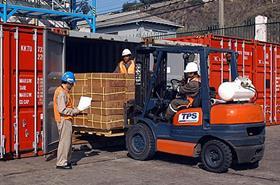
Updated at 12.30pm GMT with information on Chilean fruit exports to Europe and North America.
Asia has been one of only a few areas of growth for Chile’s export industry this year, and those areas have not quite managed to offset the decline in the Latin American supplier’s traditional Western markets.
Speaking to local media at a press conference yesterday, Chilean Fruit Exporters Association (Asoex) chairman Ronald Bown explained the country’s fruit export volumes for 2011/12 had fallen 2.1 per cent overall.
Exports to Asia rose 10.7 per cent to 380,718 tonnes, while North American volumes had stayed static at 863,747 tonnes, and European volumes had fallen 9.3 per cent, reported Fresh Fruit Portal (FFP).
While the volume figures slow a slight overall decline, they belie a more significant movement in value figures.
Data released earlier in the year by the Chilean Ministry of Agriculture’s Office of Agricultural Studies and Policy (ODEPA) showed a significant divergence between volume and value trends in the current trading environment.
The ODEPA figured for the first five months of 2012 showed a 19 per cent drop in the Chile’s fresh fruit export values on the same period last year, with a volume decline of only 3.5 per cent.
In the broader picture, Asia has of course fared well, but it has not been without its own challenges.
Exports to Taiwan, Chile’s third largest market in Asia, dipped 6 per cent to 61,529 tonnes, according to the latest figures from Asoex, while India experienced a significant drop of 23.7 per cent.
The key trends in Chile’s trade to the region is of course the growth of China, and the accompanying shift of exports from Hong Kong to the mainland. The two markets combined saw volume growth of 22.8 per cent, reported FFP.
South Korea has also seen strong growth, with volumes rising 30.3 per cent to 62,758 tonnes. Kiwifruit has made up a large part of Chile’s growth in that market.
In Europe, meanwhile, Chile’s fruit exports fell to all of its leading markets, notably Turkey (whose arrivals dropped 33 per cent), Russia (down by 19.7 per cent), France (-16.8 per cent) and Germany (-10.8 per cent).
However, exports to Chile’s main European export markets – the Netherlands and the UK – only fell by 3.4 per cent and 2.8 per cent respectively, according to FFP.
The downturn in Europe was primarily the result of volume declines in Chile's two principal export categories to the region – table grapes and apples, whose sendings fell by 10.3 per cent and 23.7 per cent respectively.
Across in the US, the FFP report indicated that arrivals remained fairly stable, despite a 9.8 per cent decline in table grape volume, which accounts for 41 per cent of Chile’s exports to the US.
US-bound exports remained on a par with last season since the contraction in table grape volume was offset by a rise in apple exports (up 34.5 per cent) and orange sendings (55.1 per cent).



